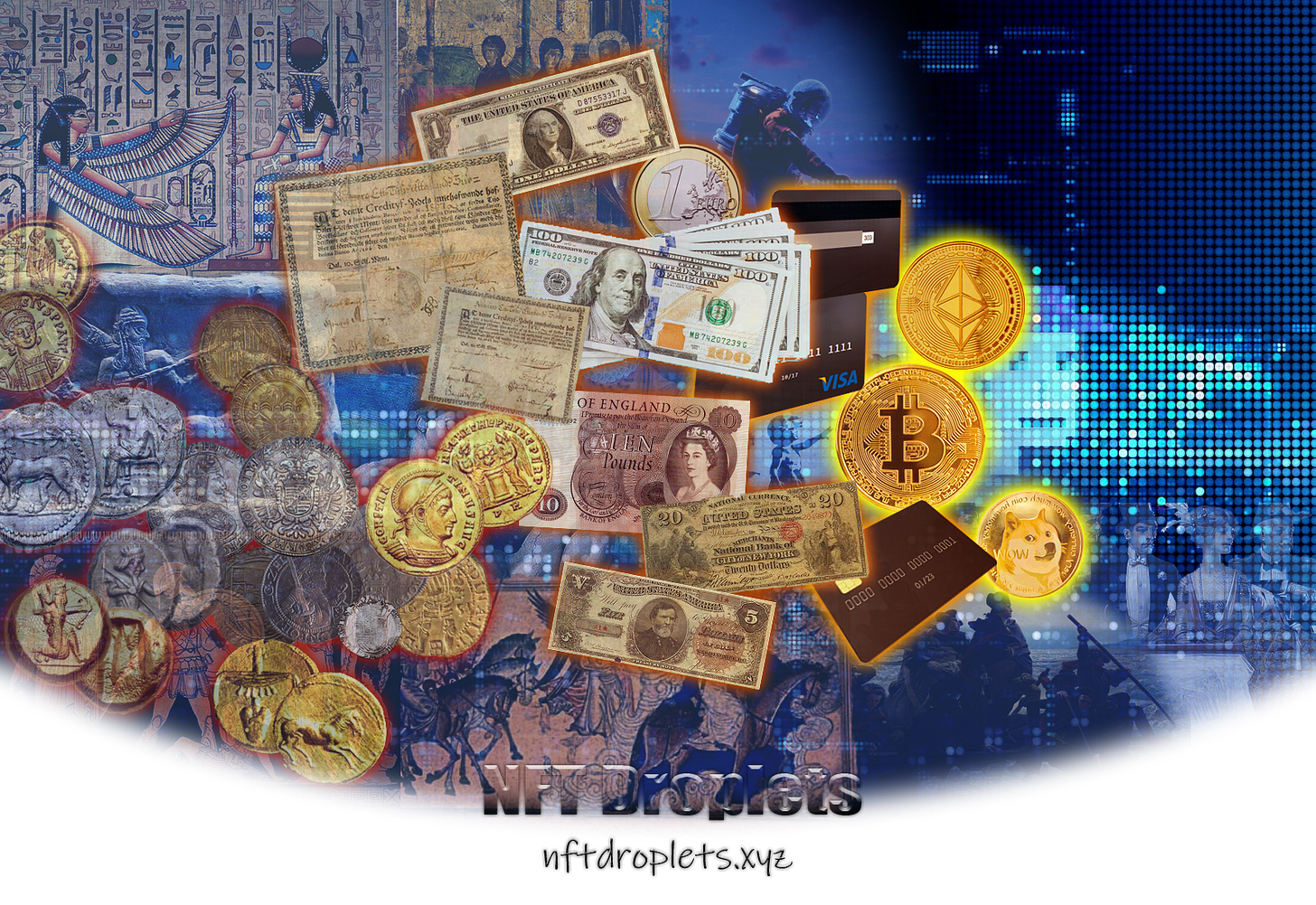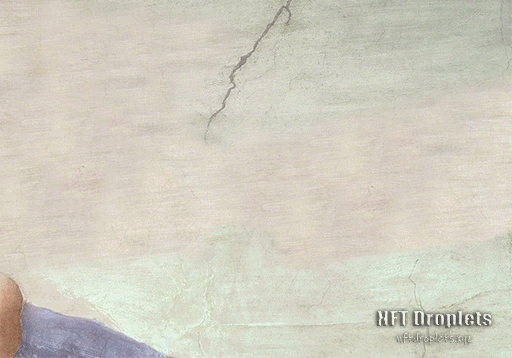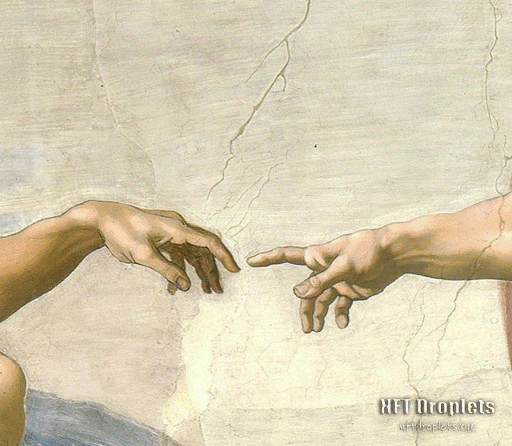The Beginner's Guide to NFTs, Part 1 - An Intro to NFTs and Crypto
What NFTs Are and Why You Need to Prepare for What's Coming...
The Beginning of Something Special
If NFTs (and/or crypto) are unfamiliar territory for you, know that you are not alone. 😌
There are revolutionary changes taking place in our world, whether you’re aware of them yet or not, but with an open mind and by absorbing content like this, you are already well on your way to being among the informed few who I believe will be prepared to thrive in the coming decade (and beyond).
The good news is that despite the massive amounts of recent hype, we are still in the early days of the crypto revolution. The innovation we will experience in areas we haven’t considered, in ways we can’t even imagine, will be mind-blowing in the next few years. Looking past the now infamous speculative cryptocurrency frenzies, we can see industries and governments around the globe already facing disruption as adoption of these technologies continue to grow exponentially.
By the end of this guide, it is my goal to ensure that your efforts are rewarded with a solid understanding of what this technology can do for you. If you decide to take action on what we learn together, you will have the confidence and skills needed to position yourself for the inevitable abundance of opportunities to come, when they come.
If you’re totally new to crypto, don’t worry! 👍
We’ll be covering everything you need to know to get you up to speed.
If you already have some understanding of cryptocurrency tokens like Bitcoin and Ether and are itching to explore the exciting world of NFTs, feel free to skip this next little section and continue down to the one right below it titled,
Non-Fungible Tokens, or “NFTs.”
“I’m New… Where Do I Even Start?!”
😵 Crypto…Bitcoin…blockchain…Ethereum…altcoins…crypto-art…NFTs…Even if you don’t know what those are (yet), doesn’t it feel like we are seeing and hearing these and related terms more and more? 👀
Perhaps you noticed some stories reported in the news or pop up in your social media feed that mentioned them. Maybe your friend or coworker has been bragging about the gains they’ve been getting trading Bitcoin, Dogecoin, or some other cryptocurrency you’ve never even heard of before. Some artists and musicians you follow might’ve even released some work recently via something called an “NFT.” 🤔Whatever got you curious enough to dig deeper, it’s becoming increasingly clear that parts of the crypto-industry have real value backing them.
Elon Musk, Marc Cuban, the Winklevoss twins - more and more of the smartest minds in technology and finance are betting on the future of this breakthrough technology, and big-name companies like Tesla, Visa, and PayPal are following suit. Even influencers like Gary Vaynerchuck have been very public about getting in the NFT game recently.
Though we mostly hear about the speculative side of crypto, or how crypto will change the future of money, tech, and whatever other sector is trying to ride the hype, we’re going to focus on NFTs. I believe that the endless applications NFTs have rank them to be among the top drivers for the widespread adoption of blockchain technology (we’ll cover what the heck blockchain is in Part 2). NFTs are bridging our digital and physical worlds and causing massive disruption in many of the industries that play significant parts of our lives today!
Tokens
Let’s first define the term, asset, as something (physical or digital) of value that can be owned. To tokenize an asset (i.e. businesses, real estate, commodities like grains) means to represent it with a symbol (not the asset itself, but a proxy for it). In the real world, a symbol can take on many forms and names. For digital blockchain assets in particular, we use the term, tokens.
Consider how stocks (are supposed to) represent a share of a business, or how a dollar bill was once a claim to gold in a bank.💸
To take a piece of digital art as an example, ownership of the intellectual property of the art is the asset, and the NFT is the token that represents the value of that asset (think of the image file on a website is just the visual representation of the asset). It’s important to note that the token itself (just a proof of ownership) holds little value on its own; it derives its value from the underlying asset that it represents (remember this). 👈💡 Note that the termtokenizationhas a vastly different meaning in the NFT space than in linguistics, data science, and D&I, which we won’t get into here.
Non-Fungible Tokens, or “NFTs”
Those terms already sound very technical. Let’s start by breaking it down into something a bit more understandable (and no, “NFTs” does not stand for “No-Fun Tech stuff,” at least, not after we’re done demystifying things 😁).
Fungible
First of all, what is “fungible?”
Fungible just means that an item is mutually interchangeable, or in other words, that it can be replaced with another identical item.
Take a currency like US dollars as an example. Physical condition, serial numbers, and sentimental value aside, your dollar bill is the same as my dollar - both of them have the same objective value. Typically, fungible tokens can also be divided into smaller denominations and still hold the same value (i.e. 100 $1 bills = one $100 bill). 💵
Non-Fungible
Non-fungible (shockingly) refers to anything that isn’t fungible - unique items that can’t be replaced by another item, even if they share similar traits. These could include houses, artwork, and even parts of your public identity.
Assets can also be “semi-fungible,” which like in the physical world, can start to get subjective. Think of things that share the same make or model (i.e. collectable coins, comics, clothing, cars, etc.). They can all be valued differently based on any number of qualities (i.e. first-editions vs reprints, past owners, serial numbers, etc.).
Unlike fungible tokens, non-fungible tokens are indivisible (i.e. you and I can’t each own half of your car, at least, not without some tokenization of another token; some “token-ception” if you will).
Tokens can have a maximum supply or none at all - they are as rare or as common as they are programmed to be. In order to be classified as “non-fungible,” a token must be truly unique. Even if an NFT is part of a collection with a total supply greater than one, it is still an NFT as long as it holds unique data to differentiate it (i.e. each token has a unique ID). Always check the total supply of an NFT - even though it might technically be “non-fungible,” it might not be as unique and original as you think, especially if it turns out to be part of a collection of very similar assets. ☝
While “fungible” tokens in crypto mostly represent money, “non-fungible tokens” can represent almost everything else.
Can you see why I’m so optimistic of the future of NFTs?
The Value of Assets on the Blockchain
Digital assets are nothing new, but thanks to blockchain technology, we (the users) get all the following benefits, without the need to trust a central power manage things (it’s all done with public code that can’t be tampered with).
Scarcity 🕵️♂️
The game-changing value that NFT tech brings is that for the first time ever, digital assets that were once infinitely replicable (i.e. copy-paste some digital art and you get an exact copy of the original) can now be tokenized into NFTs that are inherently and provably scarce.
While digital content we buy online can feel scarce (i.e. files available for a limited time on Gumroad or rare game items in Fortnite), the truth is that this scarcity is artificial. Sellers can always make the exact same files available again, and game companies can flood the market with more “rare” items at any time.
By contrast, the smart contract code (we’ll get to smart contracts in Part 2) ensures that each NFT is unique, with a supply of that is programmed permanently onto the blockchain (so it cannot be minted repeatedly). Sure, another user could copy the code and mint their own tokens, but anything of value that imposter code mints is immediately made void just from the existence of the original NFT on the blockchain. Even more absurd is the idea that copying data used by an NFT (like a digital art image file) steals any of the value. It’d be like photocopying some rare Pokémon cards and trying to pass them off as the real deal. 🤦♀️
Ownership 📜
Each NFT has a full historical record of its own existence, starting from when and who created it, every transaction that was ever made with it (including the buyer, seller, time, and price), and its current owner. As long as the owner has it in their wallet (a concept we will cover in Part 2), no one else can steal it or doubt who truly owns it.
Compare this to rare physical items where ownership can be disputed (i.e. rights of ownership like property deeds) or stolen (collectibles like retro baseball cards). In most cases, ownership of a tokenized asset is part of the asset and the network itself, which means that no counterparty proof or approval (i.e. from a stock broker or a bank manager) is needed.
Authenticity ✅
Once an NFT has been minted, a full record of its existence is created and continuously updated - there is no way to dispute whether or not it’s the real deal because all the proof is immutable (cannot be changed), and publicly available for everyone to see.
”How can we be so confident that its the real deal and not a fake?
Can’t someone just hack into the blockchain and edit it or duplicate it?
It’s just computer code, after all…”
The only thing someone could do would be to copy the code from the original NFT (since it is public code) and try to pass it off as legit. However, it is impossible to recreate or tamper with the time-stamped history (technically referred to as “block time”) of the original NFT (most importantly, proof of when it was created and by whom). All of this is secured through cutting-edge cryptographic technology, and in proper cases, runs on a “decentralized” computer network (in other words, it is nearly impossible for one person or group to control an entire blockchain network like Ethereum).
Longevity 📆
Physical goods like baseball cards and paintings decay over time, and are prone to getting lost, damaged and destroyed. Maintaining and storing our cherished assets can also quickly become an expensive, time-consuming effort. As mentioned before, once an NFT has been minted, there is no way to change it or remove it, so if you plan to create your own NFTs, be sure to check your work and make your edits before minting anything (or face a lifetime seeing your flawed work exist permanently on the blockchain 😈)!
The Risks Associated with Crypto
First off, if you’re still skeptical about NFTs and the crypto space… GOOD! You should be! 🚨
As with any new and hot sector with money coming in, you’re sure to encounter many scams and unscrupulous parties out there whose goal is to try and part you from your wealth. 💸The biggest risk for anyone getting into crypto, as cliché as it sounds, is to let our decisions be overinfluenced by our emotions. I know how enticing those potential gains 📈 might look, but do not give into feelings of fear and greed that are so prevalent in markets as volatile and speculative as crypto. I really want to stress just how valuable a bit of early education on crypto is, and how it will likely save you from making expensive mistakes 📉 down the line (and want to thank you for including this article in your research, by the way 😁).
On most online platforms, users agree to waive ownership and privacy rights for their account and all their content (I’m sure everyone here reads that multi-page agreement form before consenting to anything 🤣). As a user, it feels as if your own data is used against you sometimes, or at least, skewed to benefit a platform that can revoke your access at any time (including to your own content). As the public demands more transparency and control over their data, we are seeing a transition to more transparent, decentralized services. However, it’s easy for us to fall into old habits…
Just because you did the paperwork, registered with a crypto exchange, and your account claims to hold your digital assets secured by the blockchain, it does not necessarily mean that you own them (or that they’re even real)!
By leaving your cryptocurrencies and NFTs with a third-party (like online exchanges and marketplaces), you are putting your assets at risk. Unless you take custody using a digital wallet (Part 2), those tokens in your account are actually just claims to the tokens - it’s the company behind the exchange that stores them on your behalf that actually owns them. If anything were to happen by the exchange (i.e. it suddenly decides to restrict what users can do with their accounts) or to the exchange (i.e. it becomes the target of hackers who drain all the accounts), you would be sol; powerless to do anything. It’s a lot easier to hack user accounts on a website than a private wallet.
Crypto enables us as sovereign individuals 🦸♀️ to truly take ownership of our assets. Be sure to securely backup your private information and treat your valuable digital assets with a level of care and attention appropriate to what they’re worth (and don’t worry - we’ll be going over all the necessary steps to get you up and running securely in Parts 2 & 3 of this series 👌)!
The Disruptive Power of NFTs
With true ownership and scarcity built in, content creators and consumers will depend less and less on third-party middlemen and too-big-to-jail tech platforms (I won’t name names, but, you know… 😶📖).
Anything and everything about an NFT can be searched and verified by anyone with access to the blockchain network (any online NFT marketplace should offer this information for each and every NFT free of charge). Imagine a future where more value is retained by the original content creators; where influencers and communities are able to mutually support each other without having to worry about being censored, banned, or gouged.
Perhaps I’m just naïve and idealistic, but I believe that the future will be decentralized and distributed - one where industries and governments can either embrace the next disruptive phase of internet technology, or be left in the dust by those that do. This relates to the fundamental values of something called the Web 3.0 movement (if you’re interested, you can read more about Web2 vs Web3 here).
Whatever your background may be and wherever your interests lie, I am grateful that you are choosing to explore the NFT space with me, and hope that you’ve found this to be a helpful introduction so far. 🙏
We’re just getting started, so I hope you’re as stoked as I am to continue on this journey together!
Your Next Steps
Now that you’ve got a good grasp of some of the theory and concepts behind the jargon, let’s take a moment to let it all sink in. We covered quite a bit, but you might find it helpful to review some of the topics we covered (especially the bit where we cover The Value of Assets on the Blockchain), before moving on.
When you’re ready for Part 2 of this series, we will explore Ethereum - one of the most widely used blockchains in the world, and the practical steps you’ll need to join your NFT communities of choice.
If you’ve used Ethereum before and have experience with ETH transactions and digital wallets (i.e. MetaMask), feel free to skip to Part 4 of this series.
If you are interested in the history of NFTs and further details on some of the topics we covered, be sure to check out Open Sea’s NFT Bible for some extra credit. 👩🎓
As always, thank you so much for taking time to share this journey together with me into the world of NFTs. I hope you found the content helpful, and maybe even fun to read! 😁
If you would like to help support the NFT Droplets newsletter, please do Share this article with someone who would find it helpful.
If you’re not yet subscribed to NFT Droplets, enter your email below and be among the first to find out when fresh NFT articles get dropped (I promise that you will never get spammed, nor will your email ever be shared with anyone). ✅👇
If you have any questions, comments, or suggestions for future articles, please share your thoughts in the comments section below. 💬
⚠ Disclaimer ⚠
Cryptocurrencies and NFTs are a speculative asset class. Be aware of the risks involved and know that you could lose money. Everything I share references an opinion and is for information and entertainment purposes only. It is not intended to be investment advice. Please consult a licensed professional before making any investment decision.









